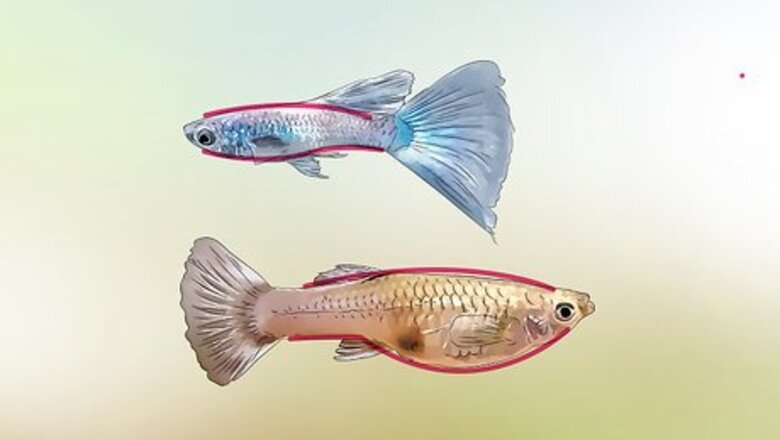
views
- Check the guppy's body shape. Male guppies are long and slender while female guppies are rounder and larger than males.
- Look at the guppy’s dorsal fin (on top of its body). Males have long dorsal fins that trail in the water; female dorsal fins are very short.
- Check for bright coloring or patterns on the guppy’s body. Males are usually more colorful than females and often have spotted or striped markings.
Examining the Guppy’s Body Shape and Coloring
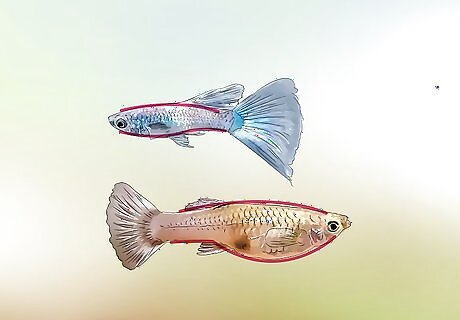
Check for a slender or round body shape. The body shape of male and female guppies is very different and distinctive. Male guppies usually have very slender, long bodies, while female guppies are usually a lot rounder and bigger than the males, sometimes twice as big as a male guppy. If your female guppy is pregnant, her body may look boxy or stuffed and even lumpy. She may grow even rounder as she gets closer to birthing her young. You may want to use a magnifying glass to get a better look at your guppy’s shape, size, and coloring as it swims around in its tank.
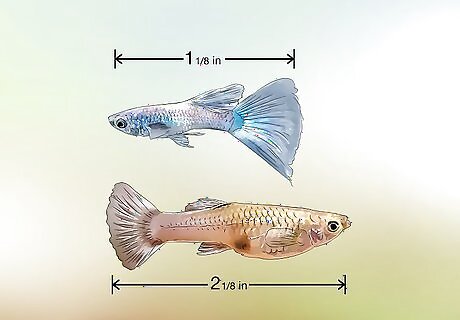
Note the size of the guppy. You may want to try to do an approximate measurement of your guppies to help determine their sex. Female guppies can grow up to 2 ⅛ inches (6 cm) and are often a lot larger than male guppies. In contrast, male guppies can grow up to 1-⅛ inches (3 cm).
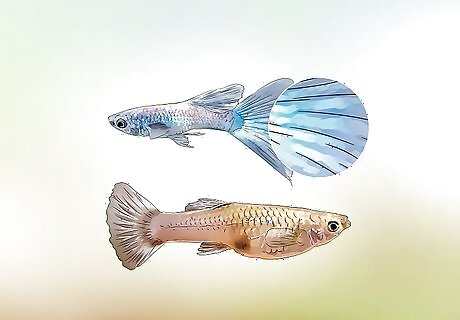
Look for bright coloring and patterns on the guppy’s body. Male guppies are often much more colorful than their female counterpart and their bodies may be covered in bright coloring and patterns. Males may have bodies and tails covered in orange, blue, violet, green, black, and white spots and stripes. They use this coloring to attract a female mate. Keep in mind that spotting a lot of bright colors and patterns on your guppy is not a sure fire way to identify it as male. Some types of guppies have females who are also quite colorful, so you may want to use other physical markers to determine the sex of your guppy in addition to coloring. You can look at different breeds of guppies online to determine what breed your guppy is as well as the different coloring and patterns on your breed's tail.
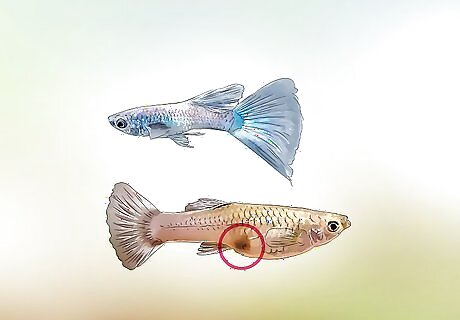
Check for the gravid spot on the underside of the guppy’s tail. While you are examining your guppy’s body shape and coloring, you should go a bit closer to your fish and check for a gravid spot. The gravid spot is a dark spot located on the underside of your guppy’s body, near the tail, and is a clear marker of a female. Males do not have a gravid spot. A pregnant female guppy’s gravid spot will get darker and bigger as she gets closer to delivering her young. As her due date approaches, you may be able to actually see the babies inside her, close to her gravid spot. Once she has her babies, her gravid spot will get lighter and then darken again when she gets pregnant again.
Looking at the Guppy’s Fins
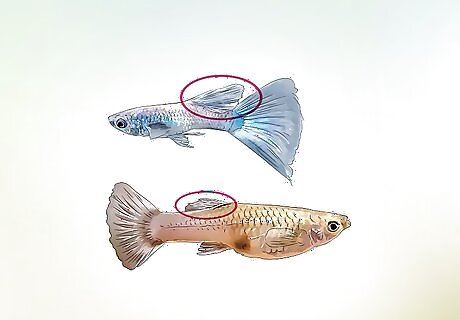
Look at the shape of the guppy’s dorsal fin. The dorsal fin is located on the top of the fish, about two to three inches from the fish’s head. Male guppies have longer dorsal fins that flow in the water as they swim around. Female guppies have shorter dorsal fins that do not trail in the water as they swim.
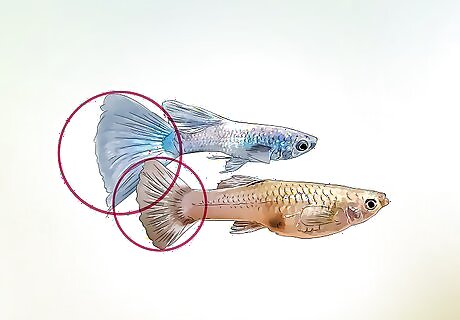
Check the shape of the guppy’s tail fin. The guppy’s tail fin, or the caudal, can help you determine the sex of the guppy. Male guppies have wide, long caudal fins that are often brightly colored, with elaborate patterns. Female guppies will have shorter caudal fins that are not as wide and long as the males.
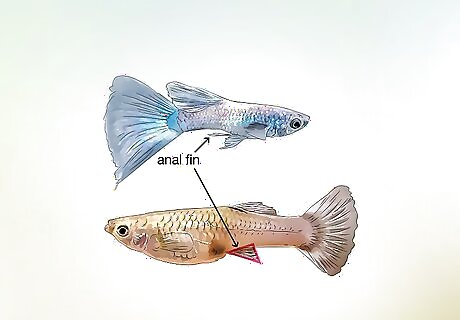
Notice the length and shape of the guppy’s anal fin. The guppy’s anal fin is located under the fish and is the smaller fin right before the tail fin. A male guppy will have an anal fin that is long and narrow, with a slightly pointed end. He will use his anal fin to deliver sperm into the female. In contrast, a female guppy will have a shorter anal fin that appears triangular in shape. Her gravid spot will be located right above her anal fin.




















Comments
0 comment